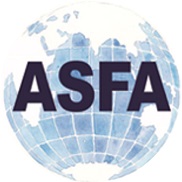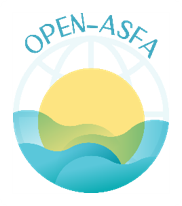Modelisation de l'habitat des ressources halieutiques dans le golfe de Gabes et projections selon un scenario de changement global
DOI:
https://doi.org/10.71754/instm.bulletin.v38.542Keywords:
Prediction, Satellite sensing, Geographical distribution, Bathymetric data, Marine resources, Climate change, Vulnerability, Water temperature, GIS, Fishery resources, Modelling, Marine, Tunisia, Gabes GulfAbstract
The gulf of Gabès, southern Tunisia, represents the most productive ecosystem of Tunisian waters. It contributes to more than 40% of the fishing production, generating important spillover and a source of income for 62% of the Tunisian maritime population. This intense activity of fishing highly impacts n this ecosystem. Indeed, several studies reported, a reduction of the productivity, changes in the specific composition of the species habitat loss etc… The importance of the problems generated by the intensification of the fishing activity represents a major concern for the researchers whose aim is to study the vulnerability of this ecosystem facing global change. Until today, no survey demonstrated objectively the modifications that could take place in the gulf of Gabès, as consequences of global change. Since it is now irrefutable that present and future tendencies of the global changes cannot be without impact on the ecosystems functioning, it appears important to promote new approaches which allow to study the vulnerability of the gulf of Gabès to these changes. Modeling habitat proved to be like a very pertinent tool to solve this kind of problems. These models that try to encapsulate the ecological niche of the species based on combinations of different variables of the environment, serve firstly to predict the present distribution of the species, then to project it according to global change scenarios. To put such a model in place, we first implemented a data set into a Geographical Information System (GIS) including the inputs of the model. This data set regroups the geographic distributions of the main species with marine interest in term of absence-presence and the abiotic variables of the environment explaining this distribution: sea surface temperature (obtained from images captured by the Advanced Very High. Resolution Radiometer (AVHRR) aboard the NOAA satellite), the chlorophyll-a concentration (obtained from images captured by the Sea-Viewing Wide Field-of-View Sensor), the bathymetry and the benthonic habitat. Once the data set constructed, we were able to model the geographic distribution of 59 species (fish, cephalopods and crustacea) and projected their future distribution for 2041-2060, and 2070-2099 according to a global change scenario.












